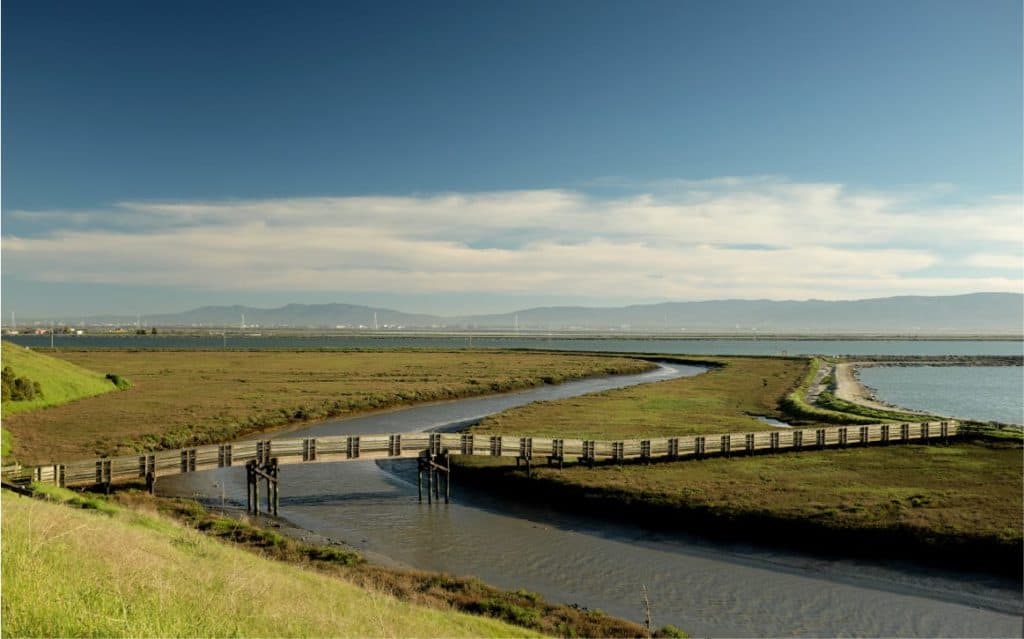
This November sees the return of a much-anticipated periodic event that has everyone talking – I’m referring of course to the return of the King Tides!
King Tides are exceptionally high tides that occur when the earth, sun, and moon are in alignment.
When these tides happen, water levels around the shoreline swell far higher than normal, and beaches, trails, and coastal infrastructure can be swamped. While the tides that are occurring today are temporary and will recede, King Tides offer us a glimpse into the future of what our Bay shoreline will be like when climate change causes sea levels to rise on a permanent basis.

By 2050, scientists estimate that the Bay Area will regularly experience Bay water levels of up to an additional 36 inches due to a combination of sea level rise and storm surge. Neighborhoods built near the shoreline will experience regular flooding, and important regional assets like airports, highways, and water-treatment plants will be severely threatened.
Impacts from sea-level rise won’t be distributed equitably. Flooding will be concentrated in more low-lying areas, and some cities will face significant financial barriers to protect their residents, businesses, roads, water treatment plants, and other critical infrastructure. It’s also becoming apparent that flooding impacts won’t be concentrated on the shore, as inland flooding will also increase due to the water table rising underground and more frequent rain.
Sea level rise and flooding are regional problems, and that is why we advocate for regional solutions to meet these challenges. Luckily, we know what works, and the solution lies in using nature to reduce these risks and protect our communities.
Wetland restoration provides important flood protection for shoreline communities. Tidal marshes act like sponges to absorb storm surges and prevent flooding. Healthy tidal marshes also serve as foraging and breeding grounds, providing food for hundreds of species, including many that are threatened and endangered. By adding additional wetland to the shoreline, we can create an important and ecologically-beneficial buffer between the Bay and developed areas.
Bay Area cities need to anticipate the reality of sea level rise by utilizing their local planning processes to adopt specific and measurable goals for climate adaptation. This should include prioritizing marsh restoration and limiting development on potential wetland areas such as the Redwood City Salt Ponds. Cities should also incorporate urban greening elements such as tree canopy, planter boxes, and other permeable surfaces that allow rain water to be absorbed by the ground to reduce flood risks. Urban greening also makes our communities more resilient to increased urban heat and can be incorporated in street designs to enhance pedestrians and bicyclist safety.
We can’t afford to wait to protect our communities from the threats posed by sea level rise and climate change. While today’s King Tides will soon recede, within the coming years the risks that they preview today will become reality tomorrow. By making smart decisions now to invest in nature-based, resilient infrastructure we can ensure that rising seas don’t swamp our cities.

















































